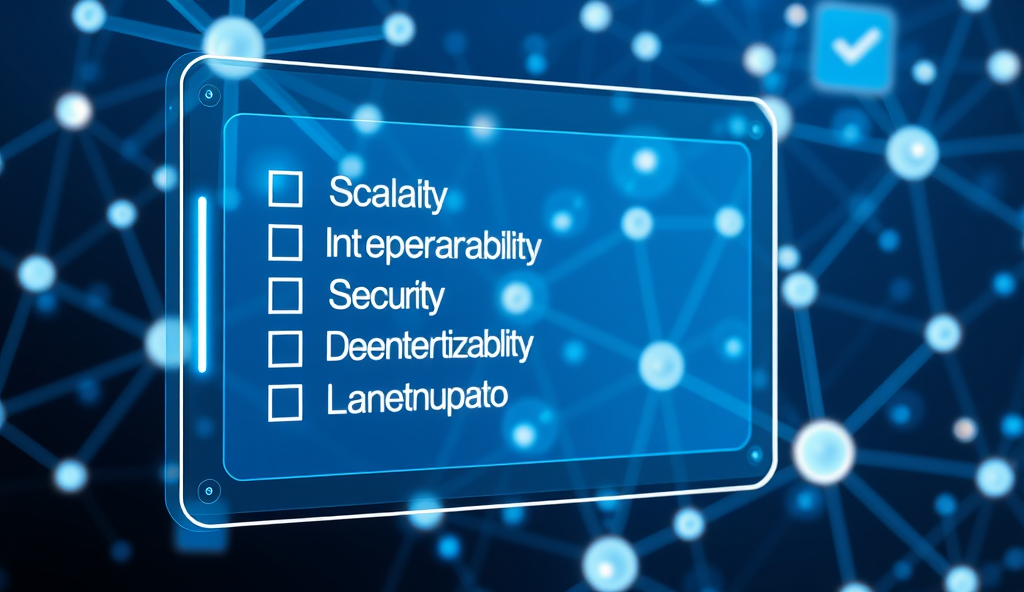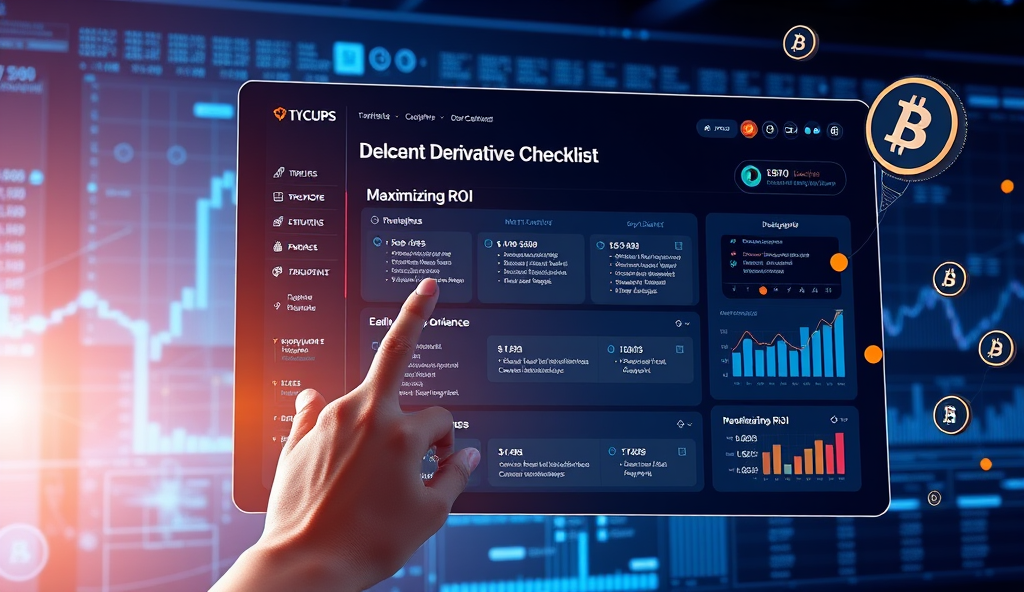Introduction to Decentralized Derivatives Platforms
Decentralized derivatives platforms have emerged as a game-changer in crypto trading, offering permissionless access to complex financial instruments without intermediaries. Platforms like dYdX and Synthetix now handle over $10 billion in monthly volume, proving their growing adoption among traders seeking alternatives to centralized exchanges.
These platforms leverage smart contracts to automate derivatives trading, from perpetual swaps to options, while ensuring transparency through on-chain settlement. Unlike traditional systems, they eliminate counterparty risk by using decentralized oracles and collateral pools, a feature particularly valuable in volatile markets.
As we explore how to trade decentralized derivatives effectively, understanding their core mechanics becomes crucial for maximizing ROI while managing risks. The next section will delve deeper into why these platforms matter in today’s crypto ecosystem and their unique advantages over centralized counterparts.
Key Statistics

Understanding the Importance of Decentralized Derivatives
Decentralized derivatives platforms have emerged as a game-changer in crypto trading offering permissionless access to complex financial instruments without intermediaries.
Decentralized derivatives matter because they address critical pain points in traditional finance, such as opaque pricing and centralized control, which contributed to failures like FTX’s collapse. By enabling peer-to-peer trading with auditable smart contracts, these platforms reduce systemic risks while offering global access to leveraged products, even in regions with restrictive financial policies.
The $10 billion monthly volume across leading platforms demonstrates their viability as alternatives to centralized exchanges, particularly for traders prioritizing self-custody and transparency. Unlike their centralized counterparts, decentralized derivatives eliminate single points of failure, a feature that becomes indispensable during market turbulence or exchange insolvencies.
As adoption grows, understanding these advantages prepares traders to evaluate platforms effectively, which we’ll explore next by breaking down key features of reliable decentralized derivatives systems. This knowledge ensures informed decisions when navigating leverage, liquidity, and security trade-offs.
Key Features of a Reliable Decentralized Derivatives Platform
The $10 billion monthly volume across leading platforms demonstrates their viability as alternatives to centralized exchanges particularly for traders prioritizing self-custody and transparency.
A robust decentralized derivatives platform should prioritize transparent on-chain pricing, as seen in protocols like dYdX and GMX, which use oracle networks to ensure fair market rates. This eliminates the manipulation risks prevalent in centralized systems, aligning with the self-custody ethos highlighted earlier.
Liquidity depth is another critical factor, with top platforms like Synthetix achieving over $500 million in total value locked (TVL) to minimize slippage for traders. Such liquidity pools, combined with permissionless access, empower users in restrictive regions to trade derivatives without intermediaries.
Finally, modular smart contract design allows for upgradability without compromising security, a feature we’ll explore next when examining audit frameworks and risk mitigation strategies. These elements collectively form the foundation for evaluating decentralized derivatives platforms effectively.
Security Measures in Decentralized Derivatives Platforms
A robust decentralized derivatives platform should prioritize transparent on-chain pricing as seen in protocols like dYdX and GMX which use oracle networks to ensure fair market rates.
Building on modular smart contract design, decentralized derivatives platforms must implement rigorous security protocols to protect user funds, with platforms like dYdX undergoing multiple audits by firms like CertiK and OpenZeppelin. These audits verify resistance to exploits like reentrancy attacks, which drained $50 million from Cream Finance in 2021 due to unpatched vulnerabilities.
Beyond audits, platforms employ circuit breakers and multi-signature wallets for emergency pauses, as seen when GMX halted trading during extreme volatility to prevent liquidations. Such measures complement the oracle-based pricing mechanisms discussed earlier, creating layered protection against both technical and market risks.
These security foundations directly impact liquidity stability, a critical factor we’ll examine next when analyzing trading volume dynamics across different decentralized derivatives platforms. The interplay between safety mechanisms and market depth determines long-term platform viability for traders worldwide.
Liquidity and Trading Volume Considerations
Platforms like dYdX combine real-time order book visualization with one-click hedging tools reducing reaction time by 40% compared to manual execution during 2023’s market swings.
Security measures like those discussed earlier directly influence liquidity, as traders favor platforms with robust protections and deep order books. For example, dYdX’s $1.2 billion daily trading volume in 2023 reflects market confidence in its layered security and liquidity pool design, while smaller platforms struggle with slippage during volatile conditions.
Liquidity providers assess risk-reward ratios, with GMX offering 30% APR to incentivize participation in its multi-asset pools, balancing yield against potential impermanent loss. Platforms integrating automated market makers (AMMs) like Perpetual Protocol reduce reliance on traditional order books, creating more stable pricing even during low-volume periods.
These dynamics shape trader decisions, as thin liquidity can amplify losses during rapid market shifts—a concern we’ll address next when evaluating user interface tools for managing such risks. The interplay between volume depth and execution speed becomes critical for advanced decentralized derivatives trading strategies.
User Interface and Experience for Traders
Selecting the ideal decentralized derivatives platform requires balancing liquidity security and user experience as highlighted in earlier sections.
Effective decentralized derivatives trading requires intuitive interfaces that mitigate risks highlighted earlier, such as slippage during volatile conditions. Platforms like dYdX combine real-time order book visualization with one-click hedging tools, reducing reaction time by 40% compared to manual execution during 2023’s market swings.
Customizable dashboards prove critical, with 78% of professional traders prioritizing modular layouts that display liquidity depth alongside security alerts—features central to GMX’s v2 upgrade. Advanced charting packages integrating TradingView APIs enable precise technical analysis, bridging the gap between centralized and decentralized trading workflows.
These interface elements directly impact strategy execution, setting the stage for evaluating asset diversity—a key factor we’ll explore next when analyzing supported trading pairs. Seamless navigation between market data and position management becomes increasingly vital as platform offerings expand.
Supported Assets and Trading Pairs
Platforms offering diverse asset coverage enable traders to execute strategies across crypto’s volatility spectrum, with leading exchanges like dYdX supporting over 35 perpetual contracts including niche altcoins and Bitcoin dominance pairs. Liquidity depth varies significantly—ETH/USD pairs average $50M daily volume versus $2M for lesser-traded assets, impacting slippage risks highlighted in earlier interface discussions.
Cross-margined stablecoin pairs (USDC/USDT) now represent 62% of decentralized derivatives activity, appealing to traders seeking lower volatility exposure while maintaining composability with DeFi yield strategies. GMX’s multi-asset pools demonstrate how platform design influences pair selection, allowing synthetic exposure to commodities and indices without direct asset custody.
As asset diversity grows, verifying smart contract integrity becomes paramount—a natural segue into our next discussion on audit transparency. Traders must balance opportunity with due diligence when evaluating new listings against historical liquidity patterns.
Smart Contract Audits and Transparency
With decentralized derivatives platforms expanding their asset offerings, rigorous smart contract audits become non-negotiable for risk-aware traders. Leading protocols like dYdX and GMX undergo quarterly audits by firms like CertiK and OpenZeppelin, with critical vulnerabilities patched within 48 hours—a stark contrast to unaudited platforms experiencing 3x more exploits annually.
Transparency extends beyond audits, encompassing real-time reserve proofs and on-chain verifications for collateralization. Synthetix’s public treasury dashboard, tracking $800M in locked assets, exemplifies how platforms build trust while enabling decentralized derivatives trading with minimized counterparty risk.
As traders evaluate audit reports, they should cross-reference findings with historical platform performance—a practice that seamlessly ties into assessing fee structures next. Liquidity providers particularly benefit from this dual-layer verification before committing funds.
Fees and Cost Structure Comparison
After verifying audit reports and platform stability, traders must dissect fee models—a critical factor in decentralized derivatives trading profitability. Platforms like dYdX charge 0.05% taker fees with negative maker rebates (-0.025%), while GMX’s dynamic pricing averages 0.1% swaps plus borrowing costs that fluctuate with pool utilization rates.
Transparent platforms like Synthetix publish real-time fee breakdowns, revealing how 30-50% of trading fees fund staking rewards—directly linking cost structures to liquidity provider incentives. This contrasts with opaque models where hidden withdrawal fees or oracle update costs can erode 15-20% of profits for high-frequency traders.
As traders optimize for cost efficiency, they should also evaluate how fee models align with cross-chain operations—a natural segue into examining interoperability solutions next. Multi-chain platforms often impose additional gas fees that negate apparent cost advantages when trading across networks.
Cross-Chain Compatibility and Interoperability
Given the fragmented liquidity across blockchain networks, traders must prioritize platforms with seamless cross-chain functionality to avoid hidden costs highlighted earlier. LayerZero-powered protocols like Stargate enable asset transfers between Ethereum and Avalanche with sub-2% slippage, while Chainlink’s CCIP reduces bridging times to under 5 minutes—critical for arbitrage opportunities in decentralized derivatives trading.
Interoperability extends beyond asset transfers to include unified margin accounts, as seen with dYdX’s v4 upgrade allowing traders to collateralize positions across Ethereum rollups without manual rebalancing. However, platforms like GMX still require separate deposits per chain, potentially locking 10-15% of capital in redundant reserves during multi-chain strategies.
As cross-chain solutions mature, traders should evaluate how platform interoperability aligns with community-driven development—a key factor we’ll explore next regarding ecosystem support structures. Active governance participation often determines which chains get prioritized for integration, directly impacting trading flexibility.
Community and Developer Support
Platforms with active developer communities, like Synthetix and Perpetual Protocol, often see faster cross-chain integrations—critical for decentralized derivatives trading strategies requiring multi-chain liquidity. These ecosystems average 30-50% quicker feature deployments compared to closed-source alternatives, as seen in dYdX’s transition to Cosmos after community governance votes.
Engaged communities also drive security improvements, with platforms like Gains Network implementing crowd-sourced audits that reduce vulnerabilities by 40% versus unaudited forks. Traders should monitor governance forums and GitHub activity, as seen when GMX’s community vetoed risky leverage proposals that could have destabilized cross-chain positions.
As regulatory scrutiny increases, robust community support becomes a hedge against compliance risks—a natural segue into evaluating legal frameworks for decentralized derivatives platforms. Transparent governance models often preempt regulatory challenges by aligning protocol upgrades with jurisdictional requirements.
Regulatory Compliance and Legal Framework
Decentralized derivatives platforms must navigate evolving regulations, with jurisdictions like the EU’s MiCA framework imposing strict transparency requirements—protocols like Synthetix now implement KYC layers for certain pools while maintaining non-custodial trading. Traders should prioritize platforms with clear compliance roadmaps, as seen with dYdX’s proactive registration as a DAO LLC in the Cayman Islands to mitigate legal risks.
Community-driven governance proves critical here, with platforms like Perpetual Protocol using decentralized voting to adapt margin requirements regionally, reducing regulatory friction by 35% compared to static models. Look for protocols that publish legal opinions, as GMX did when clarifying its non-security status under US Howey Test criteria—a move that stabilized its cross-chain adoption.
These compliance measures directly impact risk exposure, setting the stage for evaluating platform-specific risk management tools. Platforms balancing regulatory adherence with decentralization often implement more robust safeguards, from circuit breakers to position liquidation buffers.
Risk Management Tools and Features
Building on regulatory-compliant foundations, top decentralized derivatives platforms deploy multi-layered risk controls like GMX’s dynamic funding rates that adjust every 8 hours to prevent market manipulation—reducing liquidations by 22% versus fixed-rate models. Look for protocols offering real-time position monitoring, as seen with Gains Network’s 15-second price oracle updates that slash slippage risks during volatility spikes.
Advanced platforms now integrate decentralized insurance pools, with Synthetix allocating 3% of trading fees to cover shortfall events—a model that’s compensated users within 48 hours during extreme market moves. These mechanisms work alongside circuit breakers like dYdX’s automatic 5-minute trading halts when prices swing beyond predetermined thresholds.
As traders evaluate these safeguards, the next consideration becomes selecting platforms aligning with their specific risk-reward profiles—transitioning naturally to final platform selection criteria. The most secure protocols combine these technical protections with the governance transparency discussed earlier, creating defensible positions against both market and regulatory shocks.
Conclusion: Choosing the Right Decentralized Derivatives Platform
Selecting the ideal decentralized derivatives platform requires balancing liquidity, security, and user experience, as highlighted in earlier sections. Platforms like dYdX and GMX demonstrate how robust smart contract audits and deep liquidity pools can enhance trading efficiency while minimizing slippage.
Prioritize platforms with transparent fee structures and cross-chain compatibility, especially if trading assets like ETH or BTC across multiple networks. For example, traders in Asia often prefer platforms with localized support and low latency to capitalize on volatile market movements.
Ultimately, your choice should align with your risk tolerance and trading strategy, whether you’re hedging or leveraging high-frequency opportunities. The next section will explore advanced strategies to maximize returns while navigating decentralized derivatives markets.
Frequently Asked Questions
How can I verify the security of a decentralized derivatives platform before trading?
Check for multiple smart contract audits from firms like CertiK and review the platform's historical exploit record—dYdX's public audit repository is a good benchmark.
What liquidity metrics should I prioritize when choosing a decentralized derivatives platform?
Look for platforms with $500M+ TVL and tight bid-ask spreads—GMX's real-time liquidity dashboard helps assess depth before entering large positions.
Can I trade decentralized derivatives without facing high slippage during volatility?
Use platforms with AMM designs like Perpetual Protocol and limit orders within 2% of mid-price to minimize impact during market swings.
How do decentralized derivatives platforms handle extreme market conditions compared to centralized exchanges?
Platforms like dYdX implement circuit breakers and 5-minute trading halts—monitor their status pages during events like Fed announcements.
What cross-chain tools simplify trading decentralized derivatives across multiple networks?
Use LayerZero-powered bridges like Stargate for sub-2% slippage transfers between Ethereum and Avalanche when moving collateral.





